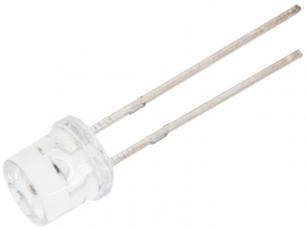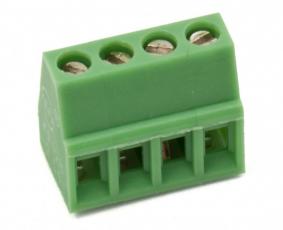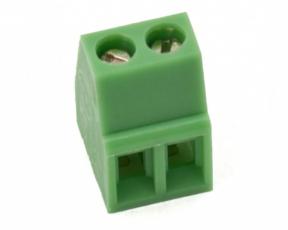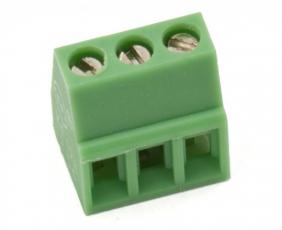Product description
The S7V8F3 switching step-up/step-down regulator efficiently produces a fixed 3.3 V output from input voltages between 2.7 V and 11.8 V. Its ability to convert both higher and lower input voltages makes it useful for applications where the power supply voltage can vary greatly, as with batteries that start above but discharge below the regulated voltage. The compact (0.45" × 0.65") module has a typical efficiency of over 90% and can deliver 500 mA to 1 A across most of the input voltage range.
The Pololu step-up/step-down voltage regulator S7V8F3 is a switching regulator (also called a switched-mode power supply (SMPS) or DC-to-DC converter) that uses a buck-boost topology. It takes an input voltage from 2.7 V to 11.8 V and increases or decreases the voltage to a fixed 3.3 V output with a typical efficiency of over 90%. The input voltage can be higher than, lower than, or equal to the set output voltage, and the voltage is regulated to achieve a steady 3.3 V.
This flexibility in input voltage is especially well-suited for battery-powered applications in which the battery voltage begins above the desired output voltage and drops below the target as the battery discharges. Without the typical restriction on the battery voltage staying above the required voltage throughout its life, new battery packs and form factors can be considered. For example:
A 3-cell battery holder, which might have a 4.5 V output with fresh alkalines or a 3.0 V output with partially discharged NiMH cells, can be used with this regulator to power a 3.3 V circuit.
A single lithium-polymer cell can run a 3.3 V device through its whole discharge cycle.
In typical applications, this regulator can deliver up to 1 A continuous when the input voltage is higher than 3.3 V (stepping down). When the input voltage is lower than 3.3 V (stepping up), the available current decreases as the difference between the voltages increases; please see the graphs at the bottom of this page for a more detailed characterization. The regulator has short-circuit protection, and thermal shutdown prevents damage from overheating; the board does not have reverse-voltage protection.
Features:
* input voltage: 2.7 V to 11.8 V
* fixed 3.3 V output with +5/-3% accuracy
* typical continuous output current: 500 mA to 1 A across most combinations of input and output voltages (Actual continuous output current depends on input and output voltages)
* power-saving feature maintains high efficiency at low currents (quiescent current is less than 0.1 mA)
* integrated over-temperature and short-circuit protection
* small size: 11 × 17 × 3 mm
The Pololu step-up/step-down voltage regulator S7V8F3 is a switching regulator (also called a switched-mode power supply (SMPS) or DC-to-DC converter) that uses a buck-boost topology. It takes an input voltage from 2.7 V to 11.8 V and increases or decreases the voltage to a fixed 3.3 V output with a typical efficiency of over 90%. The input voltage can be higher than, lower than, or equal to the set output voltage, and the voltage is regulated to achieve a steady 3.3 V.
This flexibility in input voltage is especially well-suited for battery-powered applications in which the battery voltage begins above the desired output voltage and drops below the target as the battery discharges. Without the typical restriction on the battery voltage staying above the required voltage throughout its life, new battery packs and form factors can be considered. For example:
A 3-cell battery holder, which might have a 4.5 V output with fresh alkalines or a 3.0 V output with partially discharged NiMH cells, can be used with this regulator to power a 3.3 V circuit.
A single lithium-polymer cell can run a 3.3 V device through its whole discharge cycle.
In typical applications, this regulator can deliver up to 1 A continuous when the input voltage is higher than 3.3 V (stepping down). When the input voltage is lower than 3.3 V (stepping up), the available current decreases as the difference between the voltages increases; please see the graphs at the bottom of this page for a more detailed characterization. The regulator has short-circuit protection, and thermal shutdown prevents damage from overheating; the board does not have reverse-voltage protection.
Features:
* input voltage: 2.7 V to 11.8 V
* fixed 3.3 V output with +5/-3% accuracy
* typical continuous output current: 500 mA to 1 A across most combinations of input and output voltages (Actual continuous output current depends on input and output voltages)
* power-saving feature maintains high efficiency at low currents (quiescent current is less than 0.1 mA)
* integrated over-temperature and short-circuit protection
* small size: 11 × 17 × 3 mm











